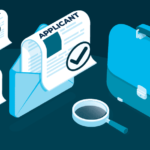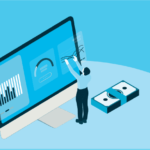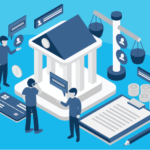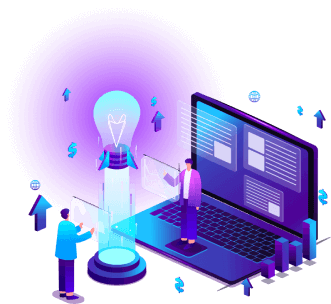7 Stages in Loan Origination Process – This process needs steps including assessing a borrower’s financial stability, income, and other financial data; resolving the loan’s size, interest rate, and other terms; and making and submitting the loan application. It also needs several additional stages, including documentation, money, and underwriting. To repay for the cost of the work needed in the origination procedure, the lender frequently charges a loan origination fee that is equal to 1% of the loan amount. Read more about the loan origination process. The procedure via which a borrower applies for a new loan and a lender processes that application is called loan origination.

The procedure of taking a loan application via the payment of cash (or denying the application) is mainly known as origination. There is a clear mortgage origination procedure for mortgages. However, after the money has been dispersed, everything up until the charges are paid off in full is covered by loan servicing. Moreover, for financial services companies, loan origination is a more specialized type of new account opening.
7 Stages in Loan Origination Process
Here are the 7 Stages in Loan Origination Process:
| Stages | |
| 1. | Pre-Qualification |
| 2. | Loan Application |
| 3. | Application Processing |
| 4. | Underwriting Process |
| 5. | Credit Decision |
| 6. | Quality Check |
| 7. | Loan Funding |
1. Pre-Qualification
The Loan Origination Process starts with this. The potential borrower will now be given a list of the objects they must present to the lender to be approved for a loan. This might consist of:
- Information about present employment, incorporating a credit history, bank statement, pay stub, and last loan statements.
- An AADHAR card, a PAN card, or Voter identification that serves as proof of identity or address.
When the lending organization gets these details, the lender assesses the paperwork and issues a pre-approval, allowing the borrower to move with the loan application procedure.
2. Loan Application
This is the second step of the loan origination procedure. The borrower finishes the loan application through this phase. This application may sometimes be sent on paper, however, today’s lenders are shifting towards an electronic form, making this stage completely Paperless. With the support of the latest technology, applications may now be accepted online or via mobile apps, and the data collected can be customized to specific loan products.
3. Application Processing
Processing defines the administrative tasks essential to get a loan application set for an underwriter to go at. Details about the borrower, like their income, credit history, assets, and accountabilities, must be collected and verified as part of this procedure. It also needs to put together any needed paperwork, including tax returns, pay stubs, and proof of insurance. Before sending the application to the underwriter for inspection, the processor is responsible for making sure that all essential data and paperwork are accurate and complete.
4. Underwriting Procedure
The borrower’s financial stability, income, assets, and accountability are all inspected through this stage, along with the security that will be used to secure the loan. As essential, the underwriter may also ask for more details or proof after verifying the details given in the loan application. The motive of underwriting is to start loan terms and conditions that will lessen the risk of default and assess the chance that the borrower will be capable of repaying the loan.
5. Credit Decision
An application may be received, declined, or returned to the originator for more details depending on the results of the underwriting procedure. Automated management in the parameters, like a smaller loan amount or unique interest rates, may appear if particular criteria, as resolute by the rule engine created into the system, do not match.
6. Quality Check
The quality check stage of the loan origination process is important for lenders because lending is highly maintained. The quality control team gets the application and reviews the main reasons in contrast to internal and external laws and regulations. The application is being seen for the last time before financing.
7. Loan Funding
After the loan agreements are finished, the majority of loans are financed rapidly. Loans against business loans, second mortgage loans, property, and lines of credit could require more time due to regulatory and legal needs. LOS can monitor funds and make sure that suitable papers are signed before or immediately with funding. Visit AutoCloud- Loan Origination System to see how it may enhance customer service and allow loan approval times of under five minutes for your customers.
Conclusion
Companies that utilize loan management systems can effortlessly track funding. They make sure that all the required documents get implemented before or together with funding. Lending firms depend on data analysis to make informed decisions that have implications for their development. They value their consumers and thus welcome technology upgrades like new-age loan origination software to ease the lending procedure on the whole.
FAQs About 7 Stages in Loan Origination Process
What is the sequence of the loan origination procedure?
Origination has processes, ranging from application and underwriting to expenditure of funds. Loan origination steps are different by lender policy, loan type, and many types of loan risk. Each loan type will have unique approval procedures and criteria that can be manual and automatic.
What are the differences between loan application and loan origination?
Loan origination is the process lenders utilize to assess and accept borrower applications for different types of debt. These incorporate loans and mortgages. Originations go from the starting application for credit via underwriting and the approval procedure.
What are the loan origination stages?
The origination process includes many steps, incorporating pre-qualification, loan application, underwriting evaluation, and so on. To completely assess borrowers, lenders must properly see their financial details, credit history, and debt-to-income balance.
What is the purpose of loan origination?
Loan origination is the procedure by which a borrower puts in an application for a new loan and a lender processes that application. Origination typically has all the steps from taking a loan application up to spending funds. For mortgages, there is a particular mortgage origination procedure.








